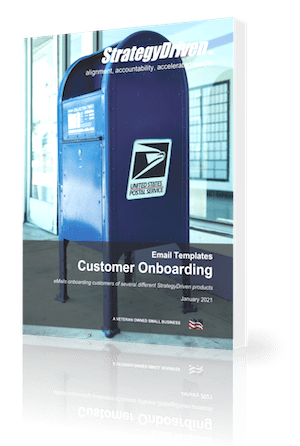5 Ways to Eliminate Comment Spam and Boost Real Conversations
StrategyDriven Insights Audio |
Blogging is one of the best marketing tools for businesses and influencers. It’s a great way to share one’s knowledge, expertise and opinions. It’s also a great way to build a community of like-minded people.
The only way you can really create that sense of community though, is to boost real conversations among your readers.
Not only do comments make many bloggers feel good, knowing their work has been seen and appreciated, but it’s also a really great way to connect with your audience on a more human level. It allows people to ask questions and get answers, to offer their support, to express their opinions and even build new friendships.
Which is why it’s important to make your blog’s comment section an inviting space.
1. Eliminate Comment Spam
As many bloggers and blog readers know, comment spam is just a part of life online. The bigger your blog grows, the more comment spam there is. It’s never ending, but that doesn’t mean you have to give in.
What is Comment Spam?
So, what is comment spam? Well, comment spam is a term used to describe a broad range of comments that are unwelcome. Often, these are comments left by people advertising products or trying to get people to click on whatever link they’ve left.
Comment spam doesn’t add any value and needs to be eliminated if you want to boost real conversations.
Why You Need to Eliminate Comment Spam
Comment spam is a big deal. It’s not just annoying, but it has a few negative effects on your blog and your reputation.
First of all, if you allow comment spam to sit around, Google will punish your domain by ranking you lower on search engine results. Google sees comment spam as a bad thing, too. Even if you just have spam links in your comment section, Google might assume you have it on other places on your website and can greatly affect your pageviews. Just check your analytics and you’ll see.
Comment spam actually puts your readers in danger. You want your website to be a safe place that people can trust. If a reader clicks on a link left in your comments that directs them to a malware site, their computer could be infected with spyware. That reader won’t feel safe on your site again and likely won’t come back.
Leaving comment spam makes you look like you don’t care. You should be taking the time to clean out any unwelcome comments, which could be links to anything from advertisements to even porn sites or viruses. People won’t want to leave a comment if it looks like you don’t take the time to look through them.
How to Eliminate Comment Spam
Now that you know why it’s necessary to eliminate comment spam, you need to know how to do it.
There are five main ways to eliminate comment spam on your blog:
- Configure WordPress to minimize comment spam. Do this by setting it so comments must be manually approved before they are posted. If you’re still new to WordPress, you can read up on the basics here that’ll guide you through how to set your site up.
- Install an anti-spam plugin.
- Use a third-party comment-hosting platform.
- Shift the conversation to social media.
- Remove comments from your blog completely.
It might seem easier to just get rid of comments altogether, but allowing comments on your blog is a great way to continue the conversation.
So assuming you don’t want to remove comments from your blog or shift the conversation to social media, you should focus on the first three steps.
Interested in learning how to boost real conversation in your comment section? Keep reading.
2. Make It Easy
Some blogs make it incredibly difficult to leave a comment. Some require you to fill out robot tests, others require you to sign into Facebook, or even require you to share your email address. If it’s too much work, though, people aren’t going to bother leaving a comment at all.
There are a number of commenting systems that make leaving comments a lot easier. Even better, some commenting systems make it easier to keep track of comments you’ve left on other blogs so you can reply easier and continue the conversation.
Most people aren’t going to go back to the blogs they’ve commented on to see if they got a reply, so having a commenting system would really help.
Commenting systems also make it easier to moderate comments, fight spam, notify commenters of replies, offers lead generation, and more. They’re also easy to install on any WordPress blog no matter what hosting you have.
3. Write Compelling Content
If you want people to leave comments you need to give them a reason to. Quality content that’s thought-provoking and interesting will make it more likely that people will leave meaningful comments.
Surprisingly, one of the best techniques to really take your content to the next level and inspire people to comment is emotion. Add emotion into your blog posts and you’re much more likely to receive more comments.
There are a number of emotions you can try to provoke. It can be inspirational, it can be sad, or exciting, or it can even be upsetting. If you get someone to feel something, they’ll likely want to express it.
In fact, blog posts that discuss controversial topics are much more likely to get more comments that boost real conversations among people.
4. Ask Questions
A lot of bloggers now ask at least one question at the end of every blog post in hopes it will inspire their readers to answer it in the comment section. For many of these bloggers, the closing paragraph is often something like, “What would you add to this list?” But that’s not going to get people to comment.
If you really want to increase reader engagement you should ask questions throughout your blog post that actually gets people to think.
According to ProBlogger there are seven types of questions you should ask. These questions include:
- What do you think?
- How do you feel?
- What will you do?
- What is your opinion?
- What is your story?
- What is your experience?
- What have you been working on?
So, for example, if you’re writing a blog post about a book you read, you can ask your readers if they have read it, what they thought of it, how it made them feel, or even if they would recommend it to someone and why. Always ask open-ended questions to guarantee a response.
5. Reply to All Comments
Any time you do get a comment you should reply to it right away. A lot of people comment for a reason. They might want to elaborate on what you said, ask a question, share their own experience related to the topic, or even thank you for sharing. So if you’re really interested in boosting real conversations in your comment section, keep the conversation going by replying to comments.
If people come across your blog and see you don’t take the time to reply, they won’t want to comment at all.
Keep the Conversation Going
Now that you know how to eliminate comment spam and boost real conversations, it’s time to head over to your blog and implement these ideas. Once they’re implemented, start your own email marketing campaign to ensure your audience stays up to date with your content and boost your conversations even further.













Leave a Reply
Want to join the discussion?Feel free to contribute!